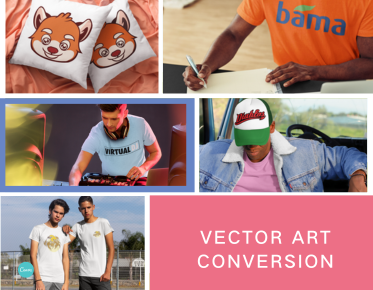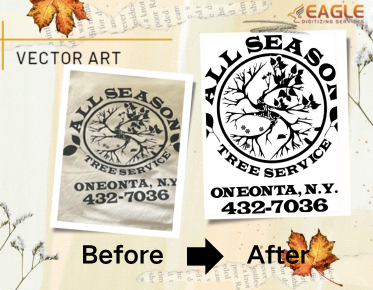The Transformative Power of Vector Graphics in Public Art
In the vibrant
tapestry of contemporary art, vector graphics
have emerged as a transformative force, shaping how we perceive and interact
with public spaces. No longer confined to the realms of digital design, vectors
have spilled into the physical world, melding technology and creativity in
unprecedented ways. This article delves into the multifaceted relationship
between vector graphics and public art, unveiling their potential to elevate
artistic expression and engage communities.
The Intersection of Vector Graphics and Public Art
The allure of
vector graphics lies in their versatility. Artists can utilize vectors to
create dynamic visuals that resonate within public spaces, from murals to
sculptures. This interplay of digital and physical mediums fosters a dialogue
between the artwork and its environment, prompting viewers to engage with their
surroundings in novel ways. In an age where public spaces are often inundated
with static imagery, vector graphics breathe life into otherwise mundane
landscapes, igniting curiosity and inspiring exploration.
Incorporating Vectors into Art Installations
How
Vectors Transform Traditional Art Forms
Infusing vector
graphics into traditional art forms has paved the way for innovative
expressions. Artists can integrate vectors into painting, sculpture, and mixed
media, resulting in hybrid artworks that blend the old with the new. This
fusion creates opportunities for dialogue between different artistic practices,
allowing for fresh interpretations and experiences.
Designing
Large-Scale Murals with Vector Graphics
Murals, once
limited by the constraints of paint and canvas, have been revolutionized by vector
graphics. Artists can now create large-scale designs with precision, ensuring
that every detail is accounted for, regardless of the mural's size. This
capacity for meticulous planning and execution transforms public spaces into
dynamic canvases, turning walls into stories that reflect the community's
identity and values.
The
Role of Vectors in Interactive Installations
In an era where
interactivity is paramount, vector graphics have become instrumental in
creating engaging art installations. Artists can design interactive elements
that respond to viewer participation, fostering a sense of connection between
the artwork and the audience. These installations invite exploration,
encouraging spectators to interact with art in ways that transcend passive observation,
thus enriching the overall experience.
Case Studies: Successful Art Installations Using Vectors
Iconic
Examples of Vector Art in Public Spaces
Several
groundbreaking art installations exemplify the potential of vector graphics in
public art. One noteworthy example is the renowned "The Olin" mural
in Philadelphia, where vibrant vector designs encapsulate the city’s rich
history and cultural diversity. This visually striking mural not only
beautifies the urban landscape but also serves as a conversation starter among
residents and visitors alike.
Analyzing
the Work of Contemporary Artists Utilizing Vectors
Contemporary
artists such as Aaron Draplin have harnessed the power of vector graphics to
create visually stunning and culturally relevant works. Draplin’s distinctive
style marries bold typography with intricate vector illustrations, capturing
the essence of American design. His work exemplifies how vectors can be used to
craft narratives that resonate with audiences, bridging the gap between digital
and physical realms.
Lessons
Learned from Notable Vector-Based Installations
Exploring
successful vector-based installations reveals invaluable insights for aspiring
artists. One crucial lesson is the importance of context. Understanding the
environment and community in which the art will be displayed is paramount.
Artists must consider the cultural, historical, and social implications of
their work to ensure that it resonates with the intended audience, fostering a
meaningful connection.
Designing for Specific Spaces
Adapting
Vector Graphics to Fit Architectural Elements
When creating
public art installations, artists must consider the architectural elements of
the space. Vector graphics offer the flexibility
to adapt designs seamlessly to various surfaces, whether it's a curved wall, a
public plaza, or a historical building. This adaptability allows artists to
integrate their work into the environment, enhancing its visual impact while
respecting the site's character.
Considering
Environmental Factors: Light, Space, and Audience Interaction
Environmental
factors play a pivotal role in the success of art installations. Artists must
assess how natural light interacts with their designs and how viewers will
engage with the space. Vector graphics allow for experimentation with colors
and contrasts, enabling artists to create pieces that dynamically respond to
changing conditions, ensuring that the art remains captivating at all times.
Creating
Site-Specific Installations with Vector Art
Site-specific
installations leverage the unique qualities of their surroundings to create
immersive experiences. By employing vector graphics, artists can craft works
that reflect the identity of a community or engage with local narratives. This
tailored approach fosters a deeper connection between the artwork and its
environment, transforming public spaces into meaningful cultural touchstones.
Technology Meets Creativity: Toolsfor Vector Art in Installations
Essential
Software for Creating Vector Graphics
To harness the
power of vector graphics, artists rely on specialized software. Programs like
Adobe Illustrator and CorelDRAW are staples in the design world, offering a
plethora of tools for creating intricate vector designs. These platforms enable
artists to manipulate shapes and colors with precision, ensuring that their
creative visions are realized in stunning detail.
The
Best Hardware for Printing and Displaying Vector Art
In addition to
software, the right hardware is crucial for bringing vector
art to life. High-resolution printers capable of producing large-scale
prints ensure that designs maintain their clarity and vibrancy. Furthermore,
projectors and LED screens can enhance installations, allowing artists to
incorporate dynamic elements that captivate audiences.
Integrating
Digital Projections and Screens in Public Installations
Digital
projections offer an exciting avenue for artists to expand their creative
horizons. By integrating video and animation into their installations, artists
can create immersive experiences that engage viewers on multiple sensory
levels. This fusion of vector graphics and digital media opens up new
dimensions for storytelling, inviting audiences to interact with art in
innovative ways.
The Process of Bringing Vector Art to Life
From
Concept to Creation: Steps in Designing an Installation
The journey of
creating an art installation begins with a concept. Artists must envision how
their vector designs will translate into physical spaces. This process involves
sketching initial ideas, researching the site, and considering logistical
factors such as materials and budget. By meticulously planning each step,
artists can ensure a cohesive and impactful final piece.
Collaborating
with Engineers and Architects for Feasibility
Collaboration is
vital in the art installation process. Working alongside engineers and
architects allows artists to assess the feasibility of their designs, ensuring
that their visions can be realized within the constraints of the space. This
interdisciplinary approach fosters innovative solutions, merging artistic creativity
with technical expertise.
Overcoming
Technical Challenges: Printing and Fabrication Techniques
Technical
challenges are an inherent part of creating public art installations. Artists
must navigate various hurdles, from material limitations to fabrication
techniques. Utilizing vector graphics simplifies the printing and cutting
processes, enabling artists to produce high-quality pieces that withstand the
rigors of outdoor environments.
Engaging the Audience with Vector Graphics
How
to Make Art Accessible and Interactive Through Vectors
Making art
accessible and interactive is paramount in contemporary installations. Vector
graphics facilitate this by allowing artists to design pieces that invite
audience participation. Whether through tactile elements or digital
interactions, these installations create opportunities for viewers to engage
with the art, fostering a sense of ownership and connection.
Designing
for Different Demographics: Children, Adults, and Communities
Art should
resonate with diverse demographics. By considering the interests and
experiences of various audiences, artists can create installations that speak
to the heart of their communities. Vector graphics provide the flexibility to
design pieces that appeal to children, adults, and families alike, ensuring
that everyone finds joy in the experience.
The
Power of Storytelling: Using Vectors to Convey Messages
Vector graphics
excel at conveying narratives through visual storytelling. Artists can weave
intricate tales into their designs, prompting viewers to reflect on their
surroundings and experiences. By using vectors to tell stories, artists can
create installations that resonate deeply with audiences, leaving lasting
impressions long after they have left the space.
Vector Graphics in Temporary and Permanent Installations
The
Pros and Cons of Temporary Installations
Temporary
installations offer a unique platform for experimentation and innovation. They
allow artists to test concepts without long-term commitments, fostering
creativity and adaptability. However, the ephemeral nature of these projects
can also pose challenges, such as limited audience engagement and logistical
constraints in dismantling the art after its display period.
Long-Lasting
Impact: Designing Permanent Art Pieces
In contrast,
permanent installations have the potential to become integral parts of the
community’s identity. Thoughtfully designed pieces can withstand the test of
time, fostering pride and belonging among residents. These installations serve
as landmarks, reminding people of their shared experiences and cultural
heritage.
Balancing
Aesthetics and Durability in Public Art Projects
Striking a
balance between aesthetics and durability is crucial in public art. Artists
must select materials and designs that can withstand environmental factors
while still delivering visual impact. Vector graphics aid in this process,
allowing for precise calculations and planning to ensure that the final piece
is both beautiful and resilient.
Environmental Considerations in Public Art
Sustainable
Materials and Practices in Vector Installations
Sustainability is
increasingly crucial in public art. Artists can incorporate eco-friendly
materials and practices into their vector installations, minimizing their
environmental footprint. By opting for sustainable resources, artists
contribute to the broader conversation about climate change while creating meaningful
works that resonate with eco-conscious audiences.
Addressing
Climate Concerns Through Art
Art has the power
to address pressing social issues, including climate change. By using vector
graphics to convey messages about environmental responsibility, artists can
raise awareness and inspire action. These installations serve as poignant
reminders of our collective responsibility to protect the planet, inviting
viewers to reflect on their choices and impact.
How
Vector Graphics Can Promote Environmental Awareness
Vector graphics
can effectively communicate complex ideas about sustainability and
conservation. Through engaging visuals, artists can distill intricate concepts
into accessible messages that resonate with diverse audiences. By leveraging
the power of vectors, artists can foster discussions about environmental issues
and inspire change within their communities.
Legal Considerations for Public Art Projects
Copyright
and Licensing: Protecting Your Vector Designs
As artists
navigate the realm of public art, understanding copyright and licensing is
paramount. Artists must protect their vector designs to ensure that their
intellectual property is safeguarded. By familiarizing themselves with
copyright laws and seeking legal counsel when necessary, artists can secure
their rights and maintain control over their creations.
Understanding
Permits and Regulations for Public Installations
Public art
installations often require permits and adherence to local regulations. Artists
must familiarize themselves with the legal landscape governing public spaces to
ensure compliance and avoid potential pitfalls. By proactively engaging with
local authorities and seeking guidance, artists can navigate the permitting
process with confidence.
Navigating
Community Concerns and Feedback
Community
engagement is essential in the public art process. Artists should actively seek
feedback from residents to ensure that their installations resonate with the
intended audience. Addressing community concerns fosters a sense of ownership
and investment in the artwork, ultimately leading to a more meaningful and
successful installation.
The vibrant tapestry of public art, enriched by vector graphics, invites everyone to partake in a shared journey of discovery and imagination. As communities evolve, so will the narratives crafted by artists, ensuring that public spaces remain vibrant, engaging, and reflective of our diverse experiences. The future is bright, and the canvas is vast—embracing vector art promises to illuminate the path forward for artists and audiences alike.



